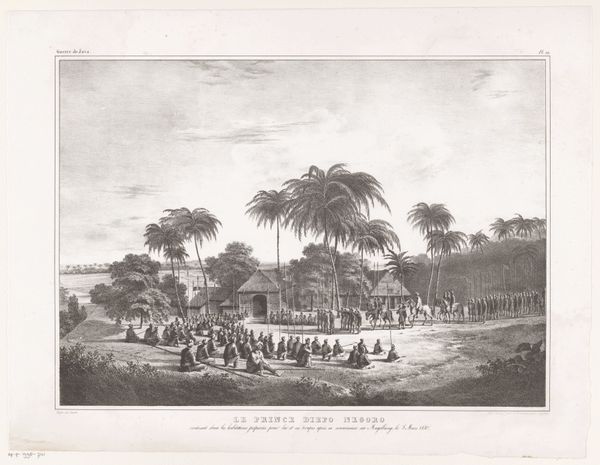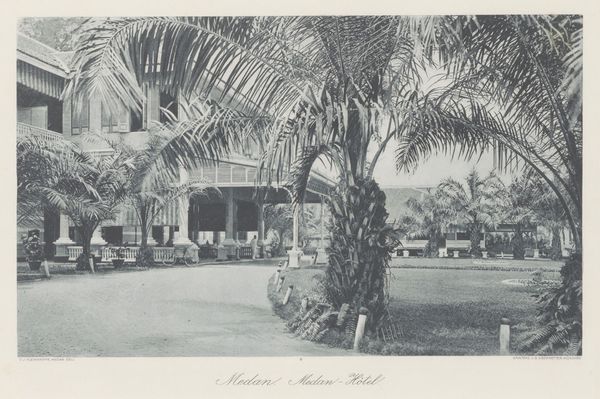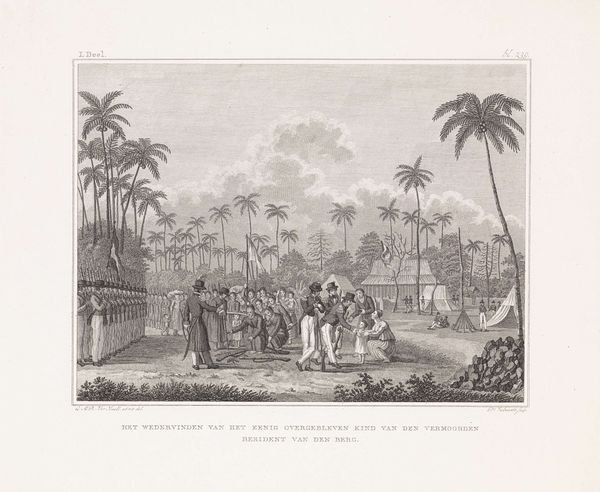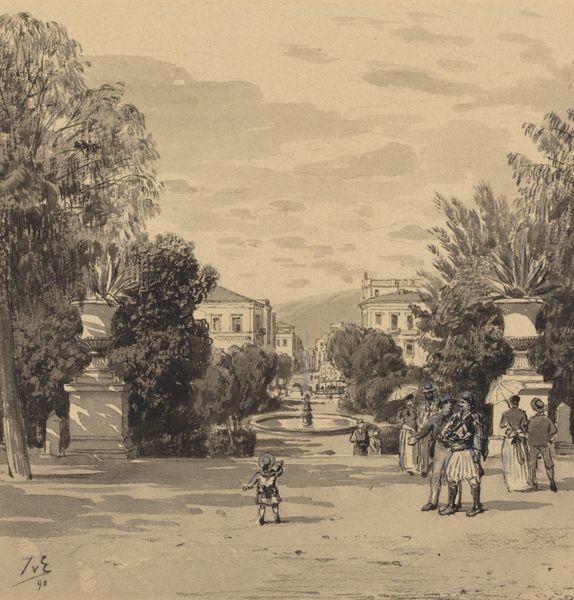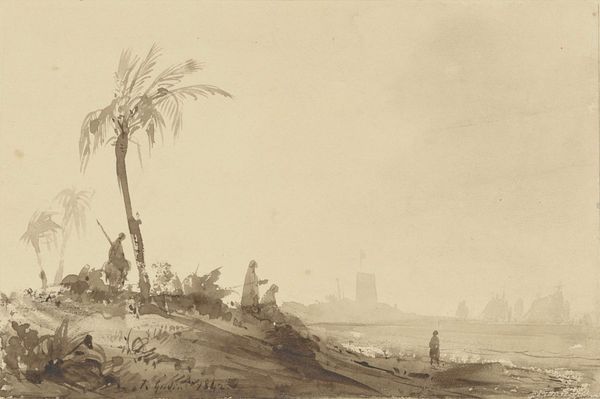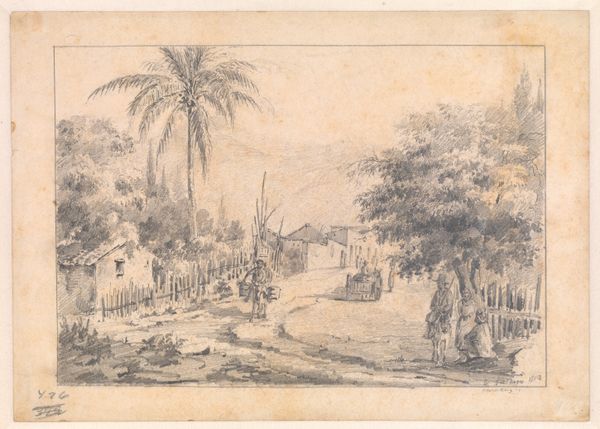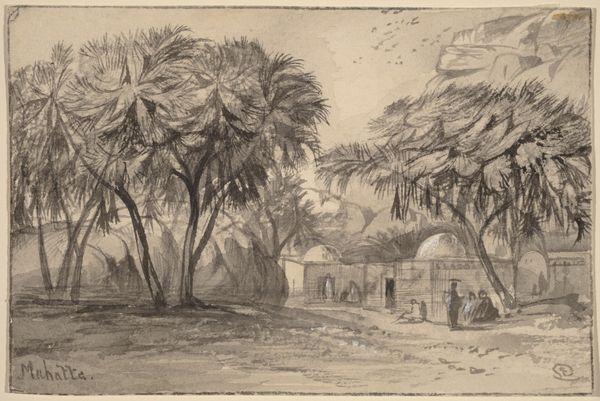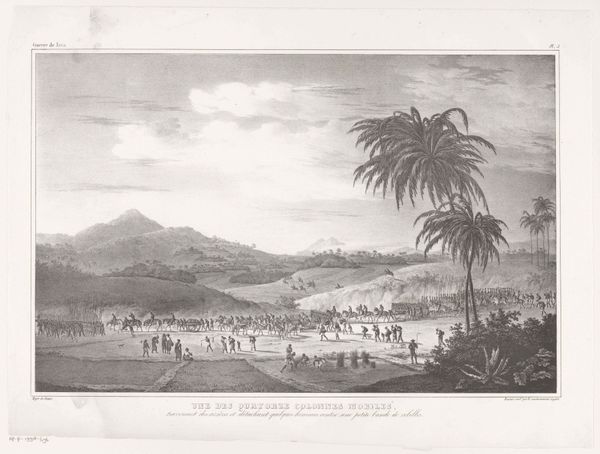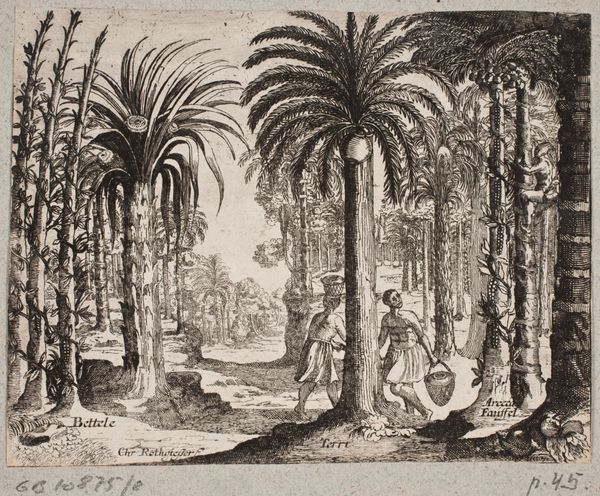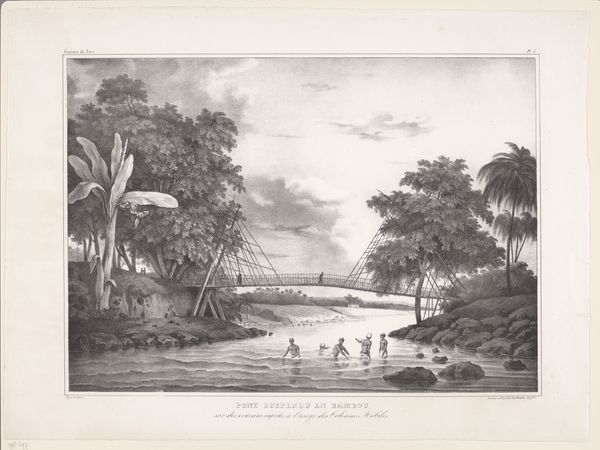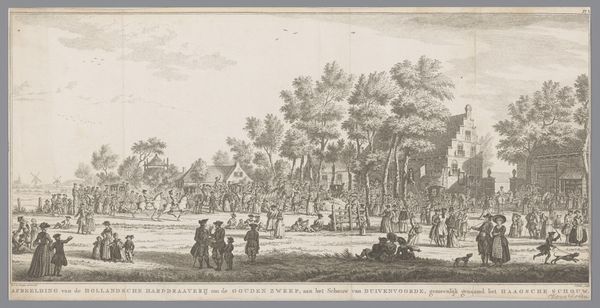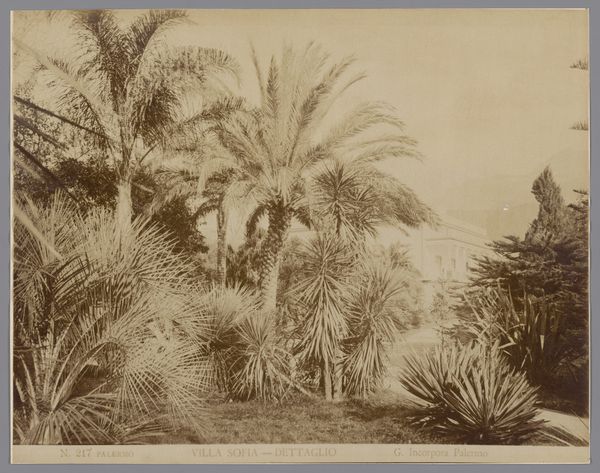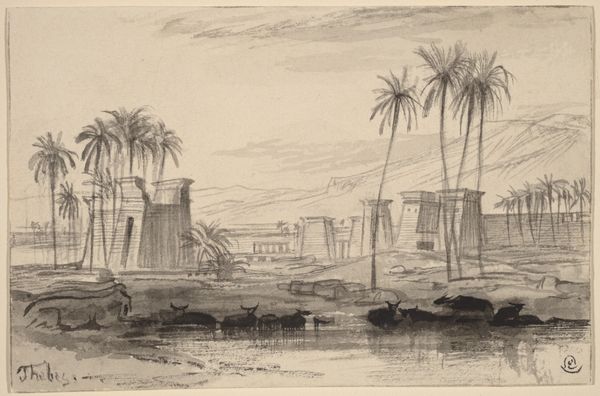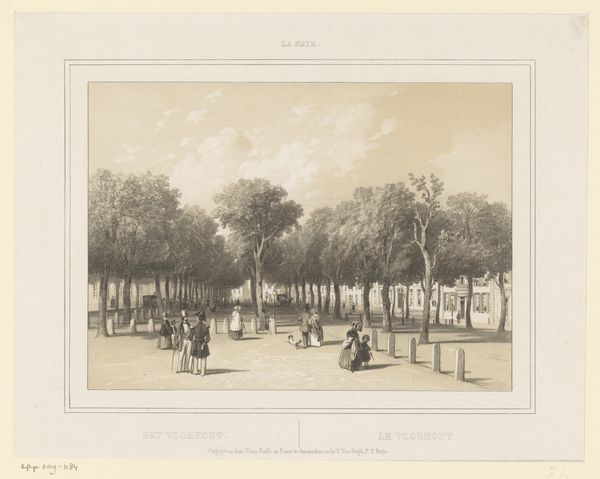
drawing, print, etching, ink
#
drawing
# print
#
etching
#
landscape
#
landscape
#
ink
#
orientalism
#
cityscape
Copyright: Public domain
Curator: Here we have Édouard Riou’s "Main Street in N'dar-tout," created in 1889 using etching, drawing, and ink for print. It’s a busy scene! Editor: My immediate feeling is of dense shade. Those towering palm trees really dominate the landscape. It feels…colonial, somehow. That filtered light, those gathered crowds. It speaks to a particular kind of power dynamic. Curator: Absolutely. It's vital to see this image through a postcolonial lens. "Orientalism" is an explicit tag associated with the work, highlighting the artist's particular vision of this place, N'dar-tout, or Saint-Louis, Senegal, during French colonial rule. Consider how this public thoroughfare functions as a constructed space showcasing colonial power. Editor: I'm interested in how Riou chooses to represent the inhabitants. Are they active participants, or merely subjects of observation? Their presence feels almost ornamental, contributing to the overall exoticized atmosphere. Curator: Exactly. The very act of depiction becomes an act of control. We, as viewers today, must contend with the layers of representation: the artist’s choices, the societal context of colonialism, and our own contemporary interpretations. Think about what the scene leaves out as well. Who isn't present in this representation of the “main street"? Editor: That meticulous etching technique also has an effect. The detail almost romanticizes the scene, smoothing over any potential tensions. The buildings appear almost dreamlike with this etching style. It definitely reflects a very specific intention. Curator: The print medium further democratizes and disseminates that idealized view, solidifying it within the cultural consciousness of the time. It would have been widely available, influencing perceptions of Africa for a broad audience. Editor: It makes me consider how crucial it is to understand the sociopolitical forces at play during the art’s creation. We have to contextualize the image and examine how this "snapshot" contributes to a larger colonial narrative. Curator: By analyzing "Main Street in N'dar-tout," we expose not just the image itself, but the broader ideologies and power structures that underpin it. It shows how seemingly straightforward landscapes can mask very complicated stories. Editor: A powerful reminder that art, even seemingly benign landscapes, is never neutral.
Comments
No comments
Be the first to comment and join the conversation on the ultimate creative platform.
